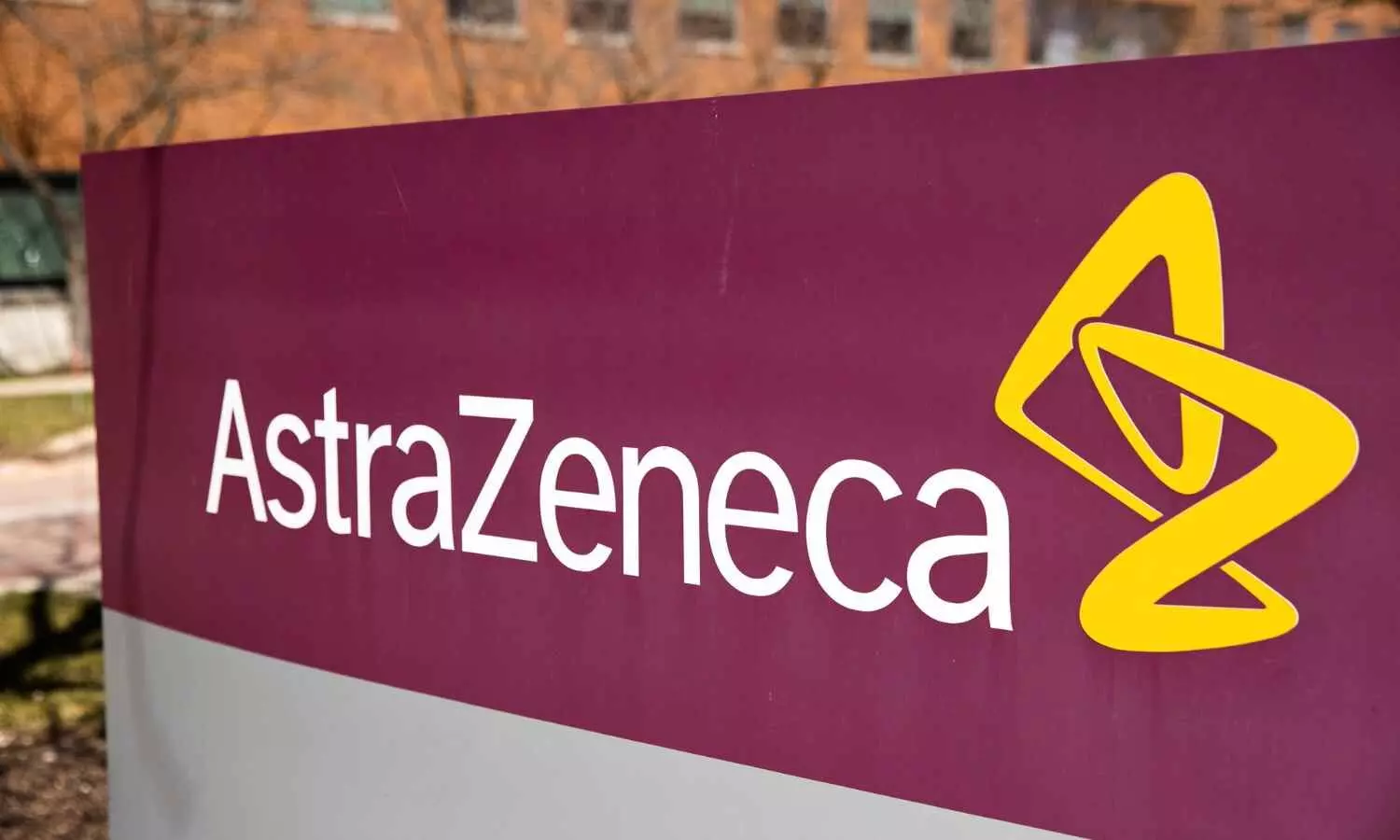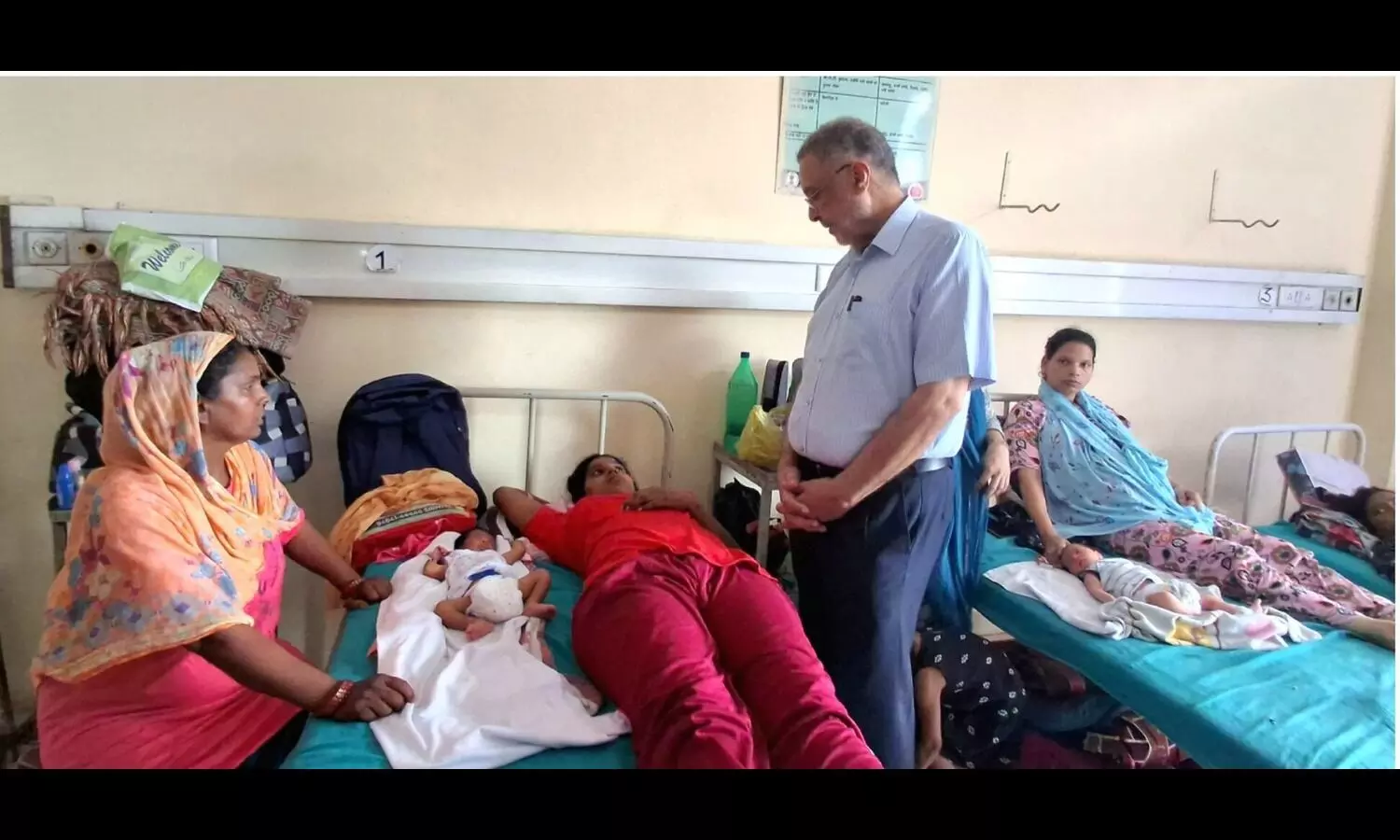Newborns require better care to improve survival and long-term health, global report says
Powered by WPeMatico
Powered by WPeMatico
Powered by WPeMatico
Powered by WPeMatico
Powered by WPeMatico

New Delhi: The apex research regulator, the Indian Council of Medical Research (ICMR), is set to strengthen outbreak response and bolster public health delivery by procuring two more Mobile BSL-3 (MBSL-3) laboratories, targeting especially remote and inaccessible areas.
Called RAMBAAN, there are currently two such laboratories – each stationed at ICMR’s two institutes, the National Institute of Virology in Pune and the RMRC in Gorakhpur, UP.
RAMBAAN is the first of its kind, Rapid Action Mobile BSL-3 laboratory and is fully indigenous. It is field-deployable and designed to meet enhanced diagnostic demands during outbreaks of known and unknown high-risk pathogens.
An initiative of ICMR, it was developed in partnership with Klenzaids Contamination Controls Private Limited, Mumbai, under the patronage of Pradhan Mantri-Ayushman Bharat Health Infrastructure Mission, Ministry of Health and Family Welfare, the apex research institute said, reports PTI.
The MBSL-3 was successfully deployed and operationalised for the first time during the Nipah virus (NiV) outbreak in Kozhikode, Kerala, in September 2023 and again in Malappuram district of the state in July 2024, it said.
This “laboratory on wheels” is built on a heavy-duty Bharat Benz vehicle chassis, compliant with BS-VI norms, designed to operate at extreme temperatures and altitudes and bears a maximum load capacity 17,000 kgs.
It is classified as a Type-IV Rapid Response Mobile Laboratory (RRML) as per WHO GOARN RRML laboratory network classification.
The laboratory is designed to maintain a negative air pressure environment and is equipped with an advanced heating, ventilation, and air conditioning (HVAC) system with HEPA filters.
It also features a double-door autoclave and a biological liquid effluent decontamination (BLED) and hydrogen peroxide (H2O2) fogger system for biological waste management.
The MBSL-3 laboratory’s work area is divided into four zones — zone-1 (driver and outer change room), zone-2 (shower and inner change room), zone-3 (main laboratory), and zone-4 (material staging and decontamination area).
Key installations within these zones include biological safety cabinets (Class II A2), an intelligent programmable logic controller system, a dynamic pass box, and an entry-exit shower system with biometric control.
The laboratory’s power supply can be from a direct electric supply or a diesel generator, with an uninterrupted power supply (UPS) and petrol generators for backup. Communication within the laboratory is facilitated by walkie-talkies and real-time surveillance through CCTVs.
Also Read:NAKSHATRA to strengthen preparedeness for future pandemics: ICMR NIV Director
Powered by WPeMatico

Cambridge: AstraZeneca and Daiichi Sankyo have announced that Datroway (datopotamab deruxtecan or Dato-DXd) has received accelerated approval from the Food and Drug Administration (FDA) for the treatment of adult patients with locally advanced or metastatic EGFR-mutated non-small cell lung cancer (NSCLC) who have received prior EGFR-directed therapy and platinum-based chemotherapy.
This indication is approved under accelerated approval based on objective response rate (ORR) and duration of response (DoR). Continued approval for this indication may be contingent upon verification and description of clinical benefit in a confirmatory trial.
The approval follows Priority Review and Breakthrough Therapy Designation by the Food and Drug Administration (FDA) based on results from a subgroup analysis of the TROPION-Lung05 Phase II trial and supported by data from the TROPION-Lung01 Phase III trial.
Jacob Sands, MD, Medical Oncology, Dana-Farber Cancer Institute and investigator in both trials, said, “Addressing disease progression in patients with advanced EGFR-mutated lung cancer after prior targeted therapy and chemotherapy is very challenging with limited later-line treatment options available. The US approval of datopotamab deruxtecan introduces a novel and needed treatment option to patients with advanced disease.”
Dave Fredrickson, Executive Vice President, Oncology Haematology Business Unit, AstraZeneca, said, “This first approval of Datroway in lung cancer provides a much-needed option to patients with advanced EGFR-mutated lung cancer whose disease has become resistant to past treatments, regardless of the driving mutation. We have long supported patients with EGFR-mutated lung cancer and are proud to bring another innovative treatment option to this community.”
Ken Keller, Global Head of Oncology Business, and President and CEO, Daiichi Sankyo, Inc, said, “With the accelerated approval, Datroway is now the first TROP2-directed medicine available for certain patients in the US living with lung cancer. We remain committed to our extensive clinical development programme to further identify where Datroway may be used in other types of lung and breast cancer.”
Andrea E. Ferris, President and CEO, LUNGevity, said, “For people with advanced EGFR-mutated non-small cell lung cancer whose disease progresses on initial treatments, additional options are limited. The approval of Datroway offers a new treatment option for patients whose disease has progressed following treatment with an EGFR-directed therapy and chemotherapy.”
In TROPION-Lung05 and TROPION-Lung01, Datroway demonstrated a confirmed ORR of 45% (95% confidence interval [CI]: 35-54) in patients with previously treated locally advanced or metastatic EGFR-mutated NSCLC (n=114) as assessed by blinded independent central review (BICR). Complete responses were seen in 4.4% of patients and partial responses were seen in 40% of patients. The median DoR was 6.5 months (95% CI: 4.2-8.4).
The safety profile of Datroway was evaluated in a pooled analysis of 125 patients in the TROPION-Lung05, TROPION-Lung01 and TROPION-PanTumor01 trials. The safety profile observed across these trials was consistent with the known profile of this medicine with no new safety concerns identified.
Datroway is a specifically engineered TROP2-directed DXd antibody drug conjugate (ADC) discovered by Daiichi Sankyo and being jointly developed and commercialised by AstraZeneca and Daiichi Sankyo.
AstraZeneca and Daiichi Sankyo are evaluating Datroway alone and with Tagrisso (osimertinib) in other advanced or metastatic EGFR-mutated NSCLC settings in the TROPION-Lung14 and TROPION-Lung15 Phase III trials.
For patients with tumours that have an EGFR mutation, the established 1st-line treatment in the metastatic setting includes EGFR-directed therapy with or without platinum-based chemotherapy. While these therapies have improved outcomes in earlier lines of treatment, most patients eventually experience disease progression and receive subsequent therapies.
Datroway is approved in more than 30 countries worldwide for the treatment of adult patients with unresectable or metastatic HR-positive, HER2-negative (IHC 0, IHC 1+ or IHC 2+/ISH-) breast cancer who have received prior endocrine-based therapy and chemotherapy for unresectable or metastatic disease based on the results from the TROPION-Breast01 trial.
Powered by WPeMatico

Thin-Fat Paradox in Indian T2DM – A Distinct Metabolic Challenge: In the Indian population, the ‘thin-fat’ phenotype-normal BMI with excess visceral and reduced peripheral fat-represents a distinct metabolic risk. Nearly one-third of Indian adults with a BMI <25 kg/m² may exhibit this profile, with a 2.7-fold higher risk of type 2 diabetes.(1) As BMI inadequately reflects adipose dysfunction, integrating pathophysiologic insights into risk assessment is essential. (1,2) Targeting insulin resistance and ectopic fat-using agents such as pioglitazone, which acts through PPAR-γ activation-may benefit metabolically selected individuals.
Unveiling Metabolic Pathways in Thin-Fat T2DM: Insulin Resistance and Ectopic Fat: The thin-fat or MUNO (metabolically unhealthy non-obese) phenotype is marked by reduced adipose tissue expandability, leading to ectopic fat deposition and insulin resistance via lipotoxicity. This contributes to the high prevalence of NAFLD/MASLD, with hepatic steatosis as an early marker of metabolic dysfunction. Hepatic insulin resistance, glucagon resistance, and DPP4 overexpression further exacerbate metabolic complications. (3)
Clinical Approach and Practical Considerations in Thin-Fat T2DM Early recognition of the thin-fat phenotype is crucial, especially in Indian individuals with normal BMI but increased visceral adiposity, insulin resistance, or early-onset metabolic disease.(1) Screening may include BMI, waist circumference, liver enzymes, lipid profile, HOMA-IR, and hepatic imaging, with ultrasound or CT/MRI (where feasible) or to quantify hepatic and visceral fat.
Pioglitazone, a selective PPAR-γ agonist, enhances insulin sensitivity in adipose tissue, liver, and skeletal muscle, while promoting the redistribution of lipids from ectopic depots (e.g., liver, muscle) into subcutaneous adipose tissue. These mechanisms are particularly relevant in thin-fat T2DM, where impaired adipose expandability and ectopic fat accumulation contribute to insulin resistance, β-cell dysfunction, and chronic inflammation. (5) This mechanistic rationale forms the basis for pioglitazone’s observed clinical benefits across diverse patient populations.
Clinical Evidence Supporting Pioglitazone in Thin-Fat and Insulin-Resistant Phenotypes
Pioglitazone-Anti-inflammatory and Cardiometabolic Benefits: In the IRIS V study (n=1,170; glitazone-naïve T2DM patients in routine care), pioglitazone significantly reduced systemic inflammation as shown by hsCRP decline (3.3 → 2.8 mg/L, p<0.01). Glycemic markers improved, with HbA1c decreasing from 7.5% to 6.8% (p<0.001), alongside reductions in fasting glucose, triglycerides, LDL cholesterol, and blood pressure. HDL increased significantly (p<0.001), indicating improved lipid homeostasis. (6)
Pioglitazone-Improved Insulin Sensitivity and β-Cell Function: In a 16-week study of 68 drug-naïve lean and obese T2DM patients, pioglitazone significantly enhanced insulin sensitivity (via euglycemic clamp), first-phase insulin secretion, and β-cell glucose sensitivity (p<0.001). HbA1c dropped by >1%, and adiponectin levels increased in obese participants, highlighting pioglitazone’s impact on adipose function and endocrine signaling. (7)
Pioglitazone Led to Reduction of Ectopic Fat: In a mechanistic trial (n=23) with adults having impaired glucose tolerance, pioglitazone (vs. metformin) reduced 2-hour glucose (172.8 → 109.8 mg/dL), increased insulin sensitivity by 65%, and lowered intramyocellular lipid (IMCL) by 34% (p≤0.002). These effects occurred without increased lipid oxidation, suggesting improved lipid partitioning. (8)
Pioglitazone’s Durable Glycemic Control in Indian Patients: An Indian observational study (n=958; T2DM uncontrolled on OADs) showed that pioglitazone (7.5–30 mg) led to sustained reductions in FBG (~27 mg/dL), PPG (up to ~60 mg/dL), and HbA1c (8.4% → 7.7%; p<0.0001) over 2 years. (9)
Pioglitazone Reduced Proteinuria in Diabetic Kidney Disease(DKD): In a double-blind trial (n=76; T2DM with proteinuria >250 mg/day), pioglitazone 15 mg/day for 2 months reduced proteinuria by 32% (p=0.005), along with improvements in HbA1c and triglycerides. (10)
Comparing Pioglitazone with SGLT2i and GLP-1 RAs: Pioglitazone is one of the few antidiabetic agents with consistent RCT evidence showing MASH resolution and potential fibrosis improvement, unlike SGLT2 inhibitors, which lack histological data despite benefits in steatosis and liver enzymes. (11) While GLP-1 receptor agonists have shown promise in improving liver outcomes primarily via weight reduction, pioglitazone remains a cost-effective option with direct histological efficacy, particularly relevant in resource-limited settings. (12)
Recommendations from RSSDI and ADA: The RSSDI 2022 guidelines recommend pioglitazone as an insulin sensitizer in patients with type 2 diabetes who exhibit features of insulin resistance, including central obesity, NAFLD, or PCOS, and note its particular relevance in lean individuals with high insulin resistance or the thin-fat phenotype. (13) Similarly, the ADA 2025 recommends considering thiazolidinediones (such as pioglitazone) for adults with cost-related barriers or suboptimal glycemic control, particularly when high insulin doses are required, while weighing potential risks. (14)
Pioglitazone has a well-characterized safety profile. Common adverse effects include fluid retention, dose-dependent and more likely with insulin, which may trigger heart failure in those with cardiac dysfunction. Weight gain is common, but it is often associated with an increase in subcutaneous fat and a shift of fluid away from visceral fat. Fracture risk is modestly increased in women, and recent analyses do not support a causal link with bladder cancer.(12)
Take-Home Messages
Reference
1. Kapoor N. Thin Fat Obesity: The Tropical Phenotype of Obesity. [Updated 2021 Mar 14]. In: Feingold KR, Ahmed SF, Anawalt B, et al., editors. Endotext [Internet]. South Dartmouth (MA): MDText.com, Inc.; 2000-. Available from: https://www.ncbi.nlm.nih.gov/books/NBK568563/
2. Misra A, Soares MJ, Mohan V, Anoop S, Abhishek V, Vaidya R, Pradeepa R. Body fat, metabolic syndrome and hyperglycemia in South Asians. J Diabetes Complications. 2018 Nov;32(11):1068-1075. doi: 10.1016/j.jdiacomp.2018.08.001. Epub 2018 Aug 4. PMID: 30115487.
3. Godoy-Matos, A.F., Silva Júnior, W.S. & Valerio, C.M. NAFLD as a continuum: from obesity to metabolic syndrome and diabetes. Diabetol Metab Syndr 12, 60 (2020). https://doi.org/10.1186/s13098-020-00570-y
4. Gorgojo-Martínez, Juan J. “Adipocentric Strategy for the Treatment of Type 2 Diabetes Mellitus.” Journal of clinical medicine vol. 14,3 678. 21 Jan. 2025, doi:10.3390/jcm14030678
5. Yki-Järvinen, Hannele. “Thiazolidinediones.” The New England journal of medicine vol. 351,11 (2004): 1106-18. doi:10.1056/NEJMra041001
6. Karagiannis, Efstrathios et al. “The IRIS V study: pioglitazone improves systemic chronic inflammation in patients with type 2 diabetes under daily routine conditions.” Diabetes technology & therapeutics vol. 10,3 (2008): 206-12. doi:10.1089/dia.2008.0244
7. Qian, Xin et al. “Pioglitazone Improved Insulin Sensitivity and First Phase Insulin Secretion Among Obese and Lean People with Diabetes: A Multicenter Clamp Study.” Diabetes therapy : research, treatment and education of diabetes and related disorders vol. 9,2 (2018): 815-826. doi:10.1007/s13300-018-0401-9
8. Rasouli, Neda et al. “Pioglitazone improves insulin sensitivity through reduction in muscle lipid and redistribution of lipid into adipose tissue.” American journal of physiology. Endocrinology and metabolism vol. 288,5 (2005): E930-4. doi:10.1152/ajpendo.00522.2004
9. Balaji, Vijayam. “Efficacy and safety of pioglitazone in type 2 diabetes in the Indian patients: Results of an observational study.” Indian journal of endocrinology and metabolism vol. 17,4 (2013): 709-15. doi:10.4103/2230-8210.113766
10. Pourshabanan, Pejman et al. “Effect of pioglitazone on decreasing of proteinuria in type 2 diabetic patients with nephropathy.” Diabetes & metabolic syndrome vol. 13,1 (2019): 132-136. doi:10.1016/j.dsx.2018.04.013
11. Isaacs SD, Farrelly FV, Brennan PNRole of anti-diabetic medications in the management of MASLDFrontline Gastroenterology 2025;16:239-249.
12. DeFronzo, Ralph A et al. “Pioglitazone: The forgotten, cost-effective cardioprotective drug for type 2 diabetes.” Diabetes & vascular disease research vol. 16,2 (2019): 133-143. doi:10.1177/1479164118825376
13. RSSDI (Research Society for the Study of Diabetes in India). RSSDI Clinical Practice Recommendations 2022: Summary Document for Training. RSSDI, 2022.
14. American Diabetes Association Professional Practice Committee; 9. Pharmacologic Approaches to Glycemic Treatment: Standards of Care in Diabetes—2025. Diabetes Care 1 January 2025; 48 (Supplement_1): S181–S206. https://doi.org/10.2337/dc25-S009
Abbreviations: T2DM – Type 2 Diabetes Mellitus, BMI – Body Mass Index, PPAR-γ – Peroxisome Proliferator-Activated Receptor Gamma, NAFLD – Non-Alcoholic Fatty Liver Disease, MASLD – Metabolic Dysfunction-Associated Steatotic Liver Disease, MUNO – Metabolically Unhealthy Non-Obese, HOMA-IR – Homeostatic Model Assessment of Insulin Resistance, hsCRP – High-Sensitivity C-Reactive Protein, LDL – Low-Density Lipoprotein, HDL – High-Density Lipoprotein, FBG – Fasting Blood Glucose, PPG – Postprandial Glucose, OADs – Oral Antidiabetic Drugs, IMCL – Intramyocellular Lipid, DPP4 – Dipeptidyl Peptidase 4, ADA- American Diabetes Association, RSSDI- Research Society for the Study of Diabetes in India
Powered by WPeMatico

Ludhiana: In a bid to improve healthcare services and curb ongoing irregularities, Punjab Health and Family Welfare Minister Dr Balbir Singh made a surprise visit to the Civil Hospital in Ludhiana on Monday. The minister inspected the hospital’s facilities and assessed the quality of patient care being delivered.
During his visit, Dr. Singh expressed concern over thefts at the hospital, including the disappearance of essential items such as water tank covers. He directed local police officials to act swiftly, identify the culprits, and bring them to justice. He underscored a zero-tolerance policy toward any form of malpractice or negligence within public health institutions.
The minister toured multiple wards, interacting with patients and their families to gather direct feedback about the quality of care and hospital services. He assured them that the government is actively working to strengthen healthcare infrastructure and ensure that affordable, quality treatment is accessible to all citizens.
Also Read: Punjab Health Minister Reopens Advanced Autism Care Center in Mohali
Addressing public concerns over COVID-19, Dr. Singh reassured the community that the situation is under control. He emphasised the continued importance of following COVID-appropriate behaviour, including wearing masks in crowded areas and maintaining proper hygiene.
On the issue of dengue prevention, Dr Singh highlighted the state’s aggressive dengue prevention campaign, ‘Har Shukarvaar, Dengue Te Vaar’ (Every Friday, War on Dengue). He said health department teams are going door to door to eliminate mosquito breeding grounds and raise public awareness about symptoms, treatment, and preventive steps.
He urged the public to cooperate fully with the health department, keep their surroundings clean, and follow medical advisories to help contain the spread of dengue.
According to TOI, Issuing a stern warning against corruption, Dr Balbir Singh declared, “If any employee is found taking bribes for work, strict disciplinary action will be taken immediately.” He urged hospital staff to uphold integrity and said, “This is your hospital, and it is your responsibility to run it with honesty and dedication.”
Also Read: Ludhiana Civil Hospital Surgeon suspended after bribe video surfaces
Powered by WPeMatico

Lucknow: Uttar Pradesh Deputy Chief Minister and Health Minister Brajesh Pathak on Monday announced significant changes in the designation and recruitment criteria for nursing staff within the state’s health department. The changes align with the central government’s health department norms and aim to upgrade the status and recognition of nurses.
Speaking to Hindustan Times, Pathak said, “Also, the nursing sister or nursing ward master will be called senior nursing officer.” This change comes following a memorandum submitted by the Rajkiya Nurses’ Sangh. However, the designations of assistant nursing superintendent, deputy nursing superintendent, nursing superintendent, and chief nursing officer remain unchanged.
Pathak also outlined the revised eligibility criteria for appointment as nursing officers. Candidates must hold a BSc (Honours) degree, have six months of relevant experience, and have a two-and-a-half-year diploma course experience from a hospital with at least 50 beds.
Also Read: AYUSH Ministry hosts 3-day Yoga Maha Kumbh in Delhi
Deputy Chief Minister Brajesh Pathak also highlighted Uttar Pradesh’s outstanding participation in International Yoga Day celebrations. With 8.27 lakh people practising yoga, Uttar Pradesh topped the list among Indian states.
As per the recent media reports by Hindustan Times, “The Yoga Day was celebrated at 16,063 Arogya Mandirs in the state. According to statistics shared by the government of India, Andhra Pradesh was in second position, Rajasthan third, Tamil Nadu fourth, while Karnataka was in fifth place,” said Pathak.
According to the statistics, Uttar Pradesh recorded the highest number of Yoga practitioners at 8,27,313, followed by Andhra Pradesh with 7,24,179 and Rajasthan with 6,15,118.
Also Read: Incorporate Yoga into Daily Life to Build a Healthier Society: CM Yogi
Powered by WPeMatico

Researchers have found in phase IIIa REDEFINE 1 trial that Addition of investigational cagrilintide to GLP-1 agonist semaglutide led to 20.4% body weight loss in adults with obesity with or without type 2 diabete . The findings of the trial were presented at the American Diabetes Association annual meeting.
Semaglutide at a dose of 2.4 mg has established weight-loss and cardiovascular benefits, and cagrilintide at a dose of 2.4 mg has shown promising results in early-phase trials; the efficacy of the combination (known as CagriSema) on weight loss in persons with either overweight and coexisting conditions or obesity is unknown.
In a phase 3a, 68-week, multicenter, double-blind, placebo-controlled and active-controlled trial, we enrolled adults without diabetes who had a body-mass index (BMI; the weight in kilograms divided by the square of the height in meters) of 30 or higher or a BMI of 27 or higher with at least one obesity-related complication. Participants were randomly assigned in a ratio of 21:3:3:7 to receive the combination of semaglutide at a dose of 2.4 mg and cagrilintide at a dose of 2.4 mg, semaglutide alone at a dose of 2.4 mg, cagrilintide alone at a dose of 2.4 mg, or placebo, plus lifestyle interventions for all groups. The coprimary end points were the relative change in body weight and a reduction of 5% or more in body weight from baseline to week 68 with cagrilintide–semaglutide as compared with placebo. Body-weight reductions of 20% or more, 25% or more, and 30% or more were assessed as confirmatory secondary end points. Effect estimates were assessed with the treatment-policy estimand (consistent with the intention-to-treat principle). Safety was assessed.
Results: A total of 3417 participants underwent randomization, with 2108 assigned to receive cagrilintide–semaglutide, 302 to receive semaglutide, 302 to receive cagrilintide, and 705 to receive placebo. The estimated mean percent change in body weight from baseline to week 68 was –20.4% with cagrilintide–semaglutide as compared with –3.0% with placebo (estimated difference, –17.3 percentage points; 95% confidence interval, –18.1 to –16.6; P<0.001). Participants receiving cagrilintide–semaglutide were more likely than those receiving placebo to reach weight-loss targets of 5% or more, 20% or more, 25% or more, and 30% or more (P<0.001 for all comparisons). Gastrointestinal adverse events (affecting 79.6% in the cagrilintide–semaglutide group and 39.9% in the placebo group), including nausea, vomiting, diarrhea, constipation, or abdominal pain, were mainly transient and mild-to-moderate in severity. Cagrilintide–semaglutide provided significant and clinically relevant body-weight reductions in adults with overweight or obesity, as compared with placebo.
Reference:
Melanie J. Davies,Harpreet S. Bajaj,Christa Broholm,Astrid Eliasen,W. Timothy Garvey,Carel W. le Roux,Ildiko Lingvay,Christian Bøge Lyndgaard,Julio Rosenstock,Sue D. Pedersen,Cagrilintide–Semaglutide in Adults with Overweight or Obesity and Type 2 Diabetes, New England Journal of Medicine, 0, 0, (undefined).
/doi/full/10.1056/NEJMoa2502082
Keywords:
Cagrilintide, Semaglutide, Significant, Weight Loss, diabetics, non diabetics, Obesity Trials, The New England Journal of Medicine, Melanie J. Davies,Harpreet S. Bajaj,Christa Broholm,Astrid Eliasen,W. Timothy Garvey,Carel W. le Roux,Ildiko Lingvay,Christian Bøge Lyndgaard,Julio Rosenstock,Sue D.
Powered by WPeMatico
